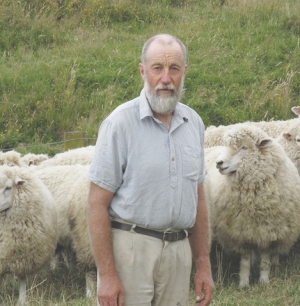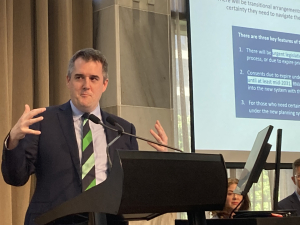I wonder how many of these people working so hard to save the planet have ever stopped to quantify how much warming would be prevented if they stopped our animals producing methane? Or have they just accepted the oft-repeated ‘logic’ that methane is a powerful greenhouse gas so its effect must be significant?
Let’s unpack the real effect of livestock methane on the climate. The August 19 article repeats the claim that about 45% of New Zealand’s emissions are from livestock. Two thirds of these are deemed to come from methane and one third from nitrous oxide.
The only way possible to achieve this figure is by counting all the emissions from our livestock. But it is basic science that a constant number of livestock maintain the atmosphere at a constant level of methane or nitrous oxide. For every molecule they produce today, one they produced in the past breaks down. If there is no change in the atmospheric levels of methane or nitrous oxide there can be no global warming from these gases.
To suggest charging farmers for the emissions from our base levels of livestock is similar to charging someone for the emissions from their biofuel-powered vehicle. How this gross error was made that includes these base levels of livestock emissions in our nation’s total emissions confounds me. Why has this mistake been allowed to persist for years?
The only way livestock can possibly cause warming is through the emissions of any increase in the numbers of animals. The question is how much warming can they produce? Thanks to Dr Wilson Flood, a Scottish chemist, I realised it is very little. His paper can be seen here: http://www.climaterealists.org.nz/sites/climaterealists.org.nz/files/The%2520Methane%2520Misconceptions%2520published%2520version.pdf
I have since derived my own figure based on the relative concentration of carbon dioxide and methane and the proportion of methane that comes from livestock.
Two assumptions are needed. The first is the relative warming of methane compared to carbon dioxide. I have used the figure of 25 that will be used in any post-Kyoto agreement. The second is the amount of warming a doubling of carbon dioxide will cause. I have used a figure of 2oC of direct warming from carbon dioxide and another 4oC resulting from feedbacks. These feedbacks are used by the IPCC in its models of future temperature, even though there is a large uncertainty as to what extent these feedbacks exist.
If all the farmers in the world were to double their number of livestock tomorrow and kept them at that level for a century, the amount of warming at the end of the century would be only 0.04oC.
I have circulated this figure to relevant scientists in recent months and challenged the recipients to respond with their figures if they disagreed with mine. To date, no alternative has emerged. This leads to me to a solid confidence that these figures are in the ballpark.
I fail to see how anyone could possibly get excited about the need to reduce the amount of methane our animals produce if they knew how small the effect would be.
I also fail to see why any of our farming lobby groups, who know this figure, are not lobbying hard to drop any sort of carbon price on livestock, be it a carbon tax or a carbon trading scheme. After all, if we don’t lobby for the truth, what is there left to stand for?
• Neil Henderson is a sheep and beef farmer at Motu, west of Gisborne. He says he was at first a global warming believer, but when he discovered the intention to ‘tax’ livestock emissions he began reading and learning about global warming from both perspectives. He has emailed and talked to scientists on both sides of the fence. His quest continues.

















